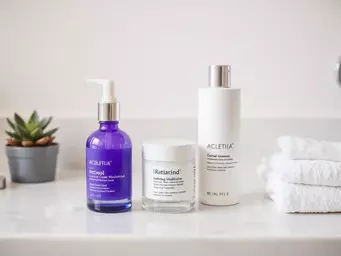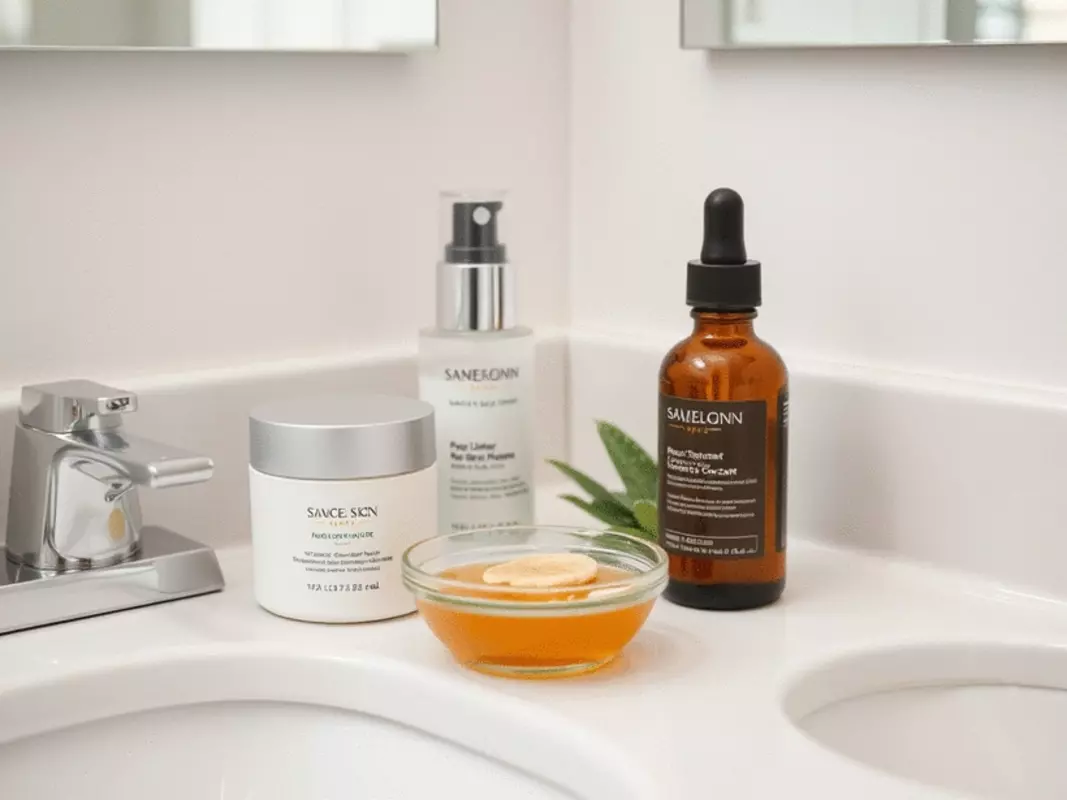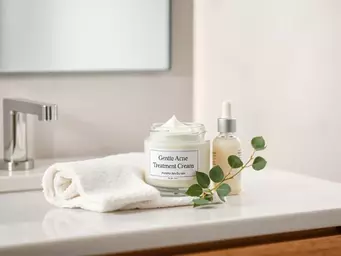Glycolic Acid for Dry Acne
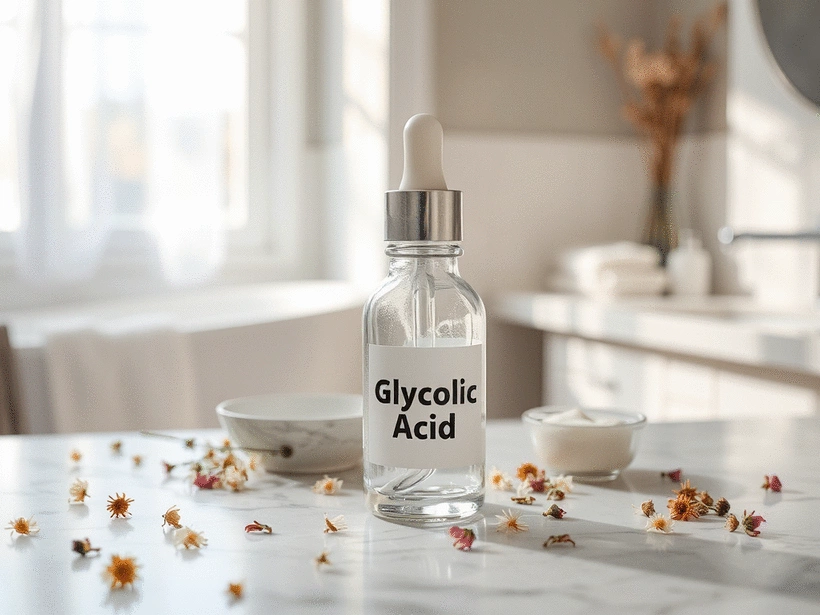
Curious about how to effectively manage dry acne-prone skin? Incorporating glycolic acid into your skincare routine might just be the solution you need. Let's explore the benefits and best practices for using this powerful ingredient!
What You Will Learn
- Glycolic acid promotes cell turnover, leading to smoother skin texture by gently exfoliating dead skin cells.
- Regular exfoliation prevents clogged pores, which can significantly reduce breakouts in acne-prone skin.
- Combining glycolic acid with hydrating ingredients like hyaluronic acid and glycerin enhances moisture retention and minimizes irritation.
- Understanding the classification of alpha hydroxy acids helps in choosing the right exfoliant for your skin type.
- Proper layering in your skincare routine, starting from cleanser to sunscreen, is key to achieving optimal results with glycolic acid.
- Chemical peels using glycolic acid can provide deeper exfoliation and improve overall skin texture, but should be performed under professional guidance.
Glycolic Acid: Benefits and Regimen Essentials
Understanding how glycolic acid works and how to integrate it into your routine for dry, acne-prone skin. This visual highlights its mechanism, key benefits, and essential layering steps.
How Glycolic Acid Works
1. Penetrates Skin: Smallest AHA, deep penetration.
2. Breaks Bonds: Dissolves dead cell bonds.
3. Reveals Fresh Layer: Promotes cell turnover for smoother skin.
Key Benefits for Dry Acne Skin
- • Prevents clogged pores
- • Reduces breakouts
- • Improves skin texture
- • Enhances product absorption
Essential Hydrating Partners
- • Hyaluronic Acid: Locks in moisture.
- • Glycerin: Draws water to skin.
- • Aloe Vera: Soothes & hydrates.
- • Niacinamide: Hydrates & reduces redness.
Skincare Layering Order
- 1. Cleanser: Gentle impurity removal.
- 2. Glycolic Product: Exfoliation step.
- 3. Hydrating Serum: Boosts moisture.
- 4. Moisturizer: Locks in hydration.
- 5. Sunscreen: Daily UV protection.
Understanding Glycolic Acid and Its Role in Treating Dry Acne Skin
Are you curious about how to tackle the persistent challenges of dry acne-prone skin? You might have heard about glycolic acid—an ingredient that’s been making waves in skincare. But what exactly is it, and how can it help with your skin concerns? Let’s unravel the mystery together!
Glycolic acid is a type of alpha hydroxy acid (AHA) derived from sugar cane. It works by gently exfoliating the skin, removing dead skin cells that can clog pores and lead to breakouts. It’s particularly beneficial for those of us dealing with the dual challenges of dryness and acne because it helps to promote cell turnover without the need for harsh scrubbing. Have you ever considered how exfoliation can be part of your journey to healthy skin? For more in-depth information about glycolic acid and its benefits for acne, you can consult resources like Healthline's guide to glycolic acid for acne.
What is Glycolic Acid and How Does It Work?
To put it simply, glycolic acid is a powerful solution for skin renewal. It penetrates the outer layer of the skin, breaking down the bonds that hold dead cells together. This allows your skin to shed these cells more easily, revealing a fresher and more vibrant layer underneath. Did you know that this process can help reduce the appearance of fine lines and improve overall skin tone?
- Promotes cell turnover for smoother skin
- Reduces the buildup of dead skin cells
- Increases skin hydration by enhancing moisture retention
When used in moderation, glycolic acid can significantly improve your skin's texture. It’s important to remember, though, that every skin type is unique, so finding the right balance is key to your success!

The Importance of Exfoliation for Acne-Prone Skin
As someone who has spent over a decade observing how different skin types react to various treatments, I can’t stress enough how crucial exfoliation is for managing acne. Regular exfoliation helps to clear clogged pores, which are a common culprit behind breakouts. If you’ve been struggling with flaky patches on your skin, gentle exfoliation could be your new best friend! Studies, such as those found on Nature.com, further highlight the importance of proper exfoliation in improving skin health and appearance.
- Prevents clogged pores and reduces breakouts
- Improves skin texture by removing dead skin cells
- Enhances the absorption of other skincare products
Incorporating glycolic acid into your routine can be an effective way to maintain a clear complexion while ensuring your skin remains hydrated. It’s a delicate dance of balance that many of my patients have found success with at Dry Acne Solutions.
Alpha Hydroxy Acids: Understanding the Classification of Glycolic Acid
Now that we’ve established what glycolic acid is, let’s dive into the world of alpha hydroxy acids (AHAs). Glycolic acid is the smallest and most effective AHA, which allows it to penetrate the skin more deeply than others. This characteristic makes it an excellent choice for individuals needing a gentle yet effective exfoliation method.
- Glycolic Acid: The most potent and effective AHA
- Lactic Acid: A milder option, great for sensitive skin
- Citric Acid: Often used for brightening and smoothing
Understanding the differences between these acids can help you make informed choices about your skincare routine. As with any treatment, it’s essential to consider your unique skin type and concerns while exploring the best options available. The PMC NCBI article on AHAs provides further scientific insights into their classifications and mechanisms.
Pro Tip
For optimal results when using glycolic acid, consider starting with a lower concentration to allow your skin to adjust. Gradually increase the frequency as your skin builds tolerance. This approach minimizes irritation while maximizing benefits, ensuring your journey to healthier skin is both effective and gentle.
Frequently Asked Questions About Glycolic Acid for Dry Acne-Prone Skin
Long-term Skincare Regimen for Managing Dry Acne with Glycolic Acid
Creating a long-term skincare regimen that effectively manages dry acne using glycolic acid can be a game changer. At Dry Acne Solutions, I often tell my patients that consistency is key! When combined with the right hydrating ingredients, glycolic acid can do wonders for your skin.
Firstly, it’s essential to understand how to formulate your regimen. Incorporating glycolic acid with hydrating elements not only enhances its effectiveness but also minimizes potential irritation—a common concern for those with dry, acne-prone skin. Let's explore some ideal combinations!
Combining Glycolic Acid with Hydrating Ingredients for Optimal Results
To make the most of glycolic acid, pair it with ingredients that promote hydration. Here are some powerful combinations:
- Hyaluronic Acid: A hydrating superstar that locks in moisture.
- Glycerin: This humectant draws water to the skin, keeping it plump.
- Aloe Vera: Known for its soothing properties, it calms irritation and hydrates the skin.
- Niacinamide: This ingredient not only hydrates but also improves skin texture and reduces redness.
Utilizing these ingredients alongside glycolic acid can create a balanced routine that promotes hydration while tackling acne. Are you ready to give these combinations a try?
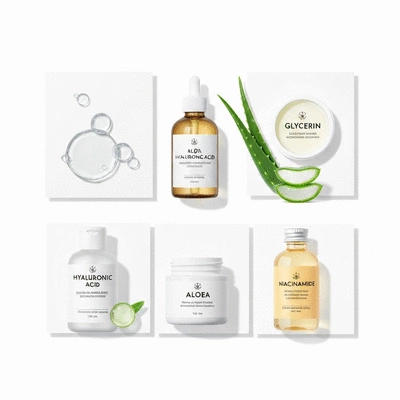
Layering Products: How to Create a Balanced Routine for Dry Acne Skin
Layering products correctly is essential for achieving the best results. Here’s a simple guide to structuring your skincare routine:
- Cleanser: Start with a gentle cleanser to remove impurities without stripping moisture.
- Glycolic Acid Product: Apply your glycolic acid product, whether it's a toner, serum, or cream.
- Hydrating Serum: Follow up with a hydrating serum containing hyaluronic acid or glycerin.
- Moisturizer: Lock in hydration with a lightweight, non-comedogenic moisturizer.
- Sunscreen: Always finish with sunscreen during the day to protect your skin.
By layering products in this order, you ensure that your skin receives both the exfoliating benefits of glycolic acid and the hydration it desperately needs. This routine will help manage dryness and prevent breakouts effectively!
Utilizing Chemical Peels for Enhanced Skin Renewal
Chemical peels can be an excellent addition to your long-term skincare regimen. They offer a more intensive treatment using glycolic acid to promote skin renewal while addressing dry acne. Here’s why they’re beneficial:
- Deep Exfoliation: Peels penetrate deeper than regular products, effectively removing dead skin cells.
- Improved Skin Texture: Regular peels can lead to smoother skin and reduced appearance of scars.
- Customized Treatments: A dermatologist can tailor the peel strength to your skin’s specific needs.
If you're considering chemical peels, it's essential to consult a professional, like myself at Dry Acne Solutions, to determine the best approach for your unique skin type.
Recap of Key Points
Here is a quick recap of the important points discussed in the article:
- Glycolic acid is a powerful AHA that promotes skin renewal by exfoliating dead skin cells.
- Regular exfoliation prevents clogged pores and reduces breakouts, improving skin texture.
- Combining glycolic acid with hydrating ingredients like hyaluronic acid and glycerin enhances moisture retention.
- Establishing a balanced skincare routine is crucial for managing dry acne-prone skin effectively.
- Chemical peels using glycolic acid can provide deeper exfoliation and improve overall skin texture.

